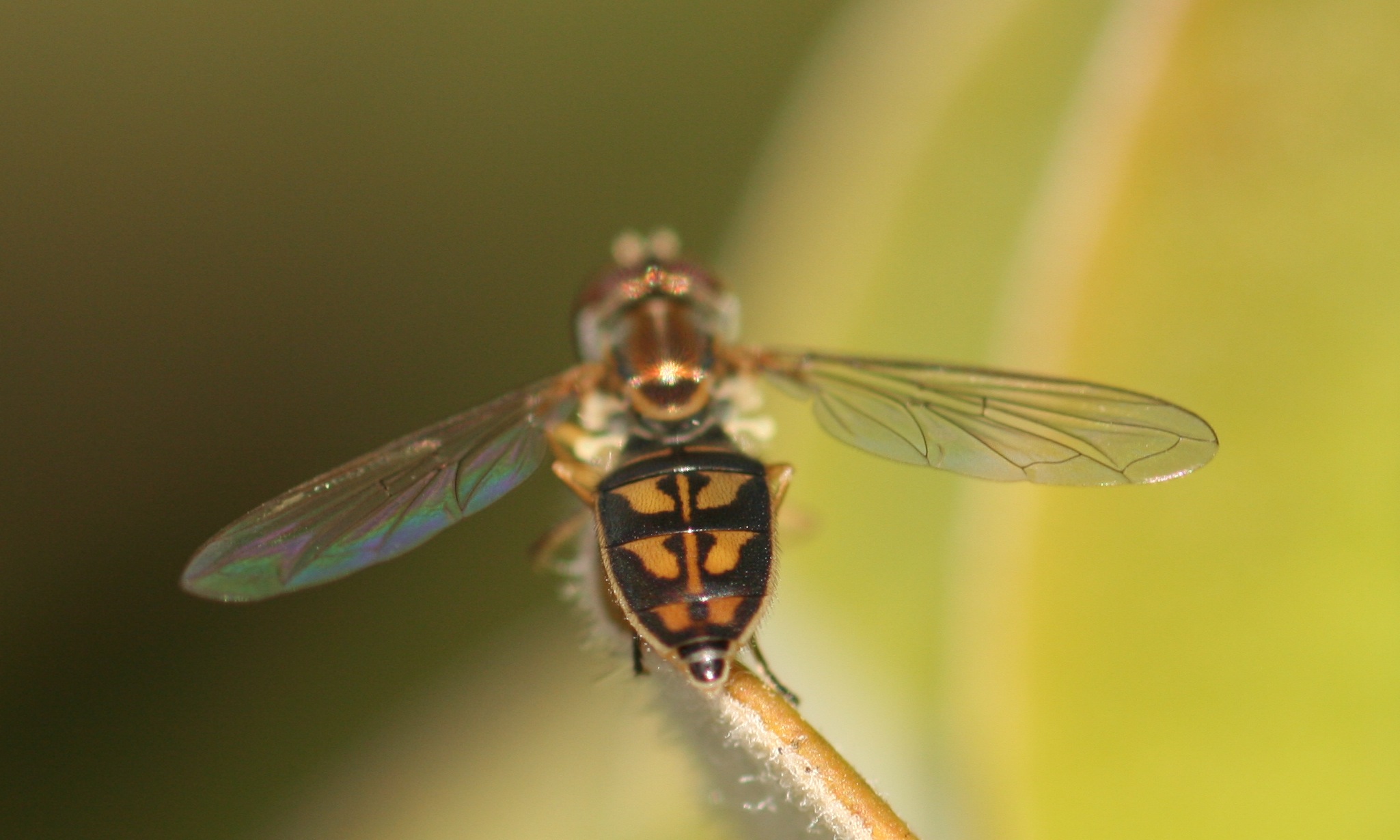the Seeds of Science
Your source for the latest from the University of Toronto's department of Ecology and Evolutionary Biology
Do flies make better pollinators than bees?
By Kelly Carscadden, EEB
If someone says ‘pollinator’, what is the first image to come to mind? A bee? Many flowering plants use bees to move pollen from one flower to another in order to reproduce. In this interaction it has always been thought that both flower and pollinator win; bees procure pollen to take back to their nests, and plants get pollinated. But each bee’s visit strips pollen from the flower and reduces the amount that could be delivered to another flower. This means that a female flower may remain unpollinated despite being visited by bees. In light of this, researchers at the University of Toronto asked: Are bees really the best pollinators? Perhaps flies, which don’t hoard pollen, are better.
Ecologist Alison Parker and her collaborators at the University of Toronto built a computer model that simulates bees and flies visiting a flower. By varying the amount of pollen removed and deposited by each visiting insect, and the number of bees and flies, they show that high numbers of bee visits may not always benefit the flowers because of the bees’ pollen-stealing behaviour. In contrast, pollination increased with each additional fly visit.
As Parker explains, these new results suggest that it is time to re-think the bee focus in pollination biology. However, she cautions that their work doesn’t mean that biologists should ignore bees altogether. Their model shows that in some cases, flies make better pollinators than bees. In many other circumstances, however, bees will likely be the best. Furthermore, in some environments bees are the only pollinators around, and some pollination is better than none.
Kelly is a graduate student in the department of Ecology and Evolutionary Biology. She studies the ways in which plants can survive and thrive in a variety of environments with the idea that differences in environmental tolerances can help explain differences in range size between species.



